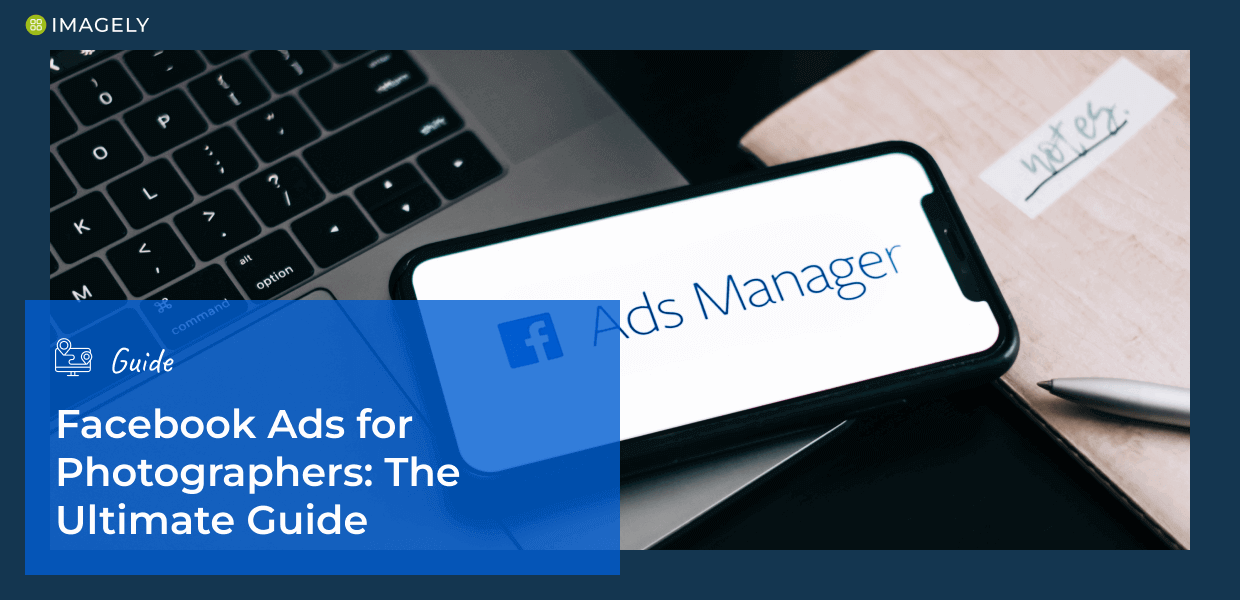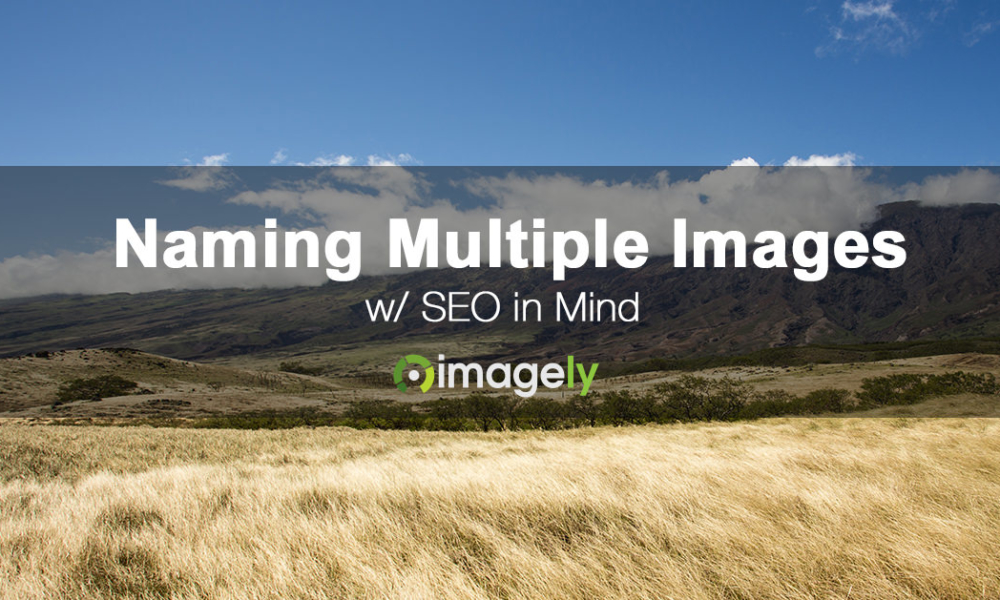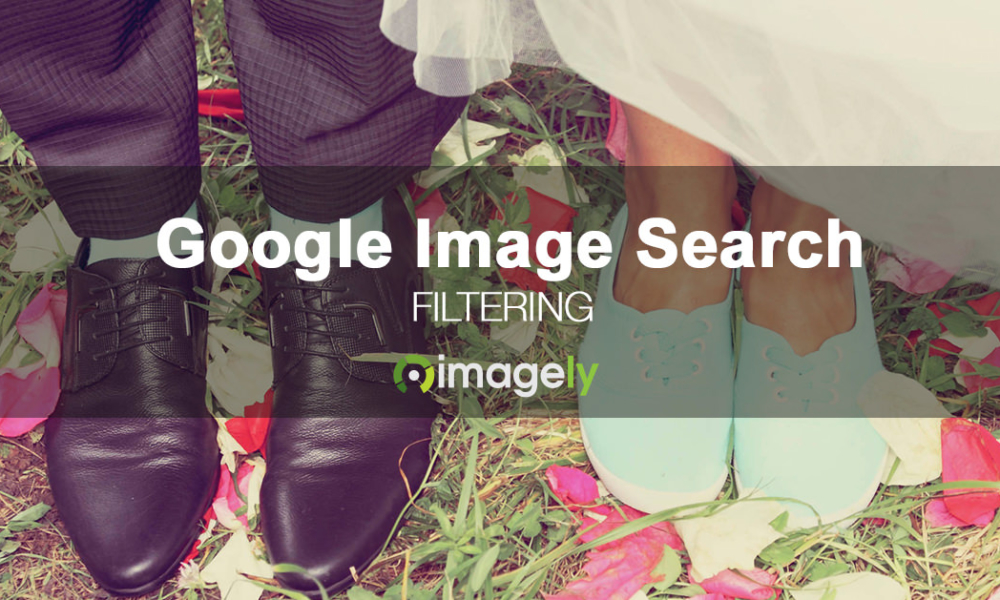Are you struggling to reach new photography clients in an increasingly crowded market? With over 3 billion monthly active users, Facebook ads offer photographers a powerful way to stand out and connect with ideal clients. But creating effective ads involves more than just boosting posts or randomly targeting users. It requires a strategic approach to reach the right audience with the right message.
I know firsthand how well Facebook ads work. Just a few months ago, I booked a family and pet portrait session after seeing a well-crafted ad in my feed. The ad featured a beautiful portrait of a couple with their golden retriever, and the caption spoke directly to couples who treat their pets like family—capturing those early years before kids come into the picture. It wasn’t a hard sell—I clicked through, browsed the portfolio, and booked a session within minutes. (Our cat wasn’t thrilled about the session, but that’s another story.)
As a professional marketer, this experience reinforced what I already knew—Facebook ads work when done right. In this comprehensive guide, we’ll walk you through everything you need to know about Facebook ads for photographers, from setting up your first campaign to advanced strategies that will help you book more clients and sell more prints.
Do Facebook ads work for photographers?
Yes, Facebook ads are highly effective for photographers when properly targeted and executed. The platform’s visual nature and detailed targeting options make it ideal for reaching potential photography clients.
- Visual Platform: As a visual social media platform, Facebook naturally complements photography, allowing your work to shine and capture attention in potential clients’ feeds.
- Precise Targeting: Facebook’s advanced targeting options let you reach potential clients based on location, interests, life events (like engagements), and more.
- Cost-Effective: Compared to traditional advertising methods, Facebook ads offer flexible budgets and detailed tracking to maximize your return on investment.
- Lead Generation: Built-in tools make it easy to collect inquiries and bookings directly from your ads.
Success rates are particularly high for wedding, family, and portrait photographers who can target based on life events and demographics. Most photographers see positive ROI within 2-3 months of consistent advertising, especially when combining ads with a strong portfolio website and clear booking process.
How to Run Facebook Ads for Photographers
Step 1: Set Up Your Foundation
The foundation of successful Facebook advertising is a professional business page.
To get started, visit https://www.facebook.com/pages/create and select Business or Brand from the options presented. You’ll want to choose Photographer as your page category to ensure you show up in relevant searches.
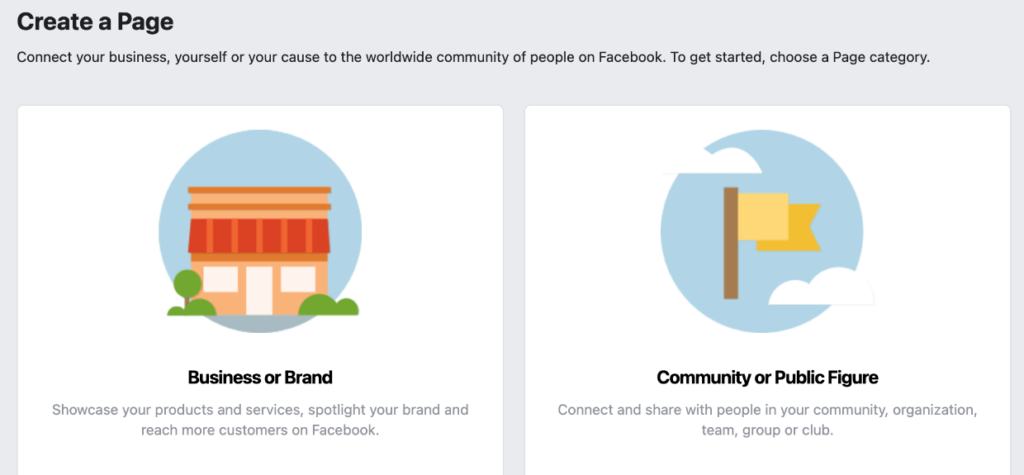
When setting up your page, think of it as your Facebook storefront. Your profile picture should be either your photography logo or a professional headshot, while your cover photo should showcase your best work.
Potential clients are more likely to trust and contact photographers who maintain complete, professional-looking pages—take time to fill out all your business information completely.
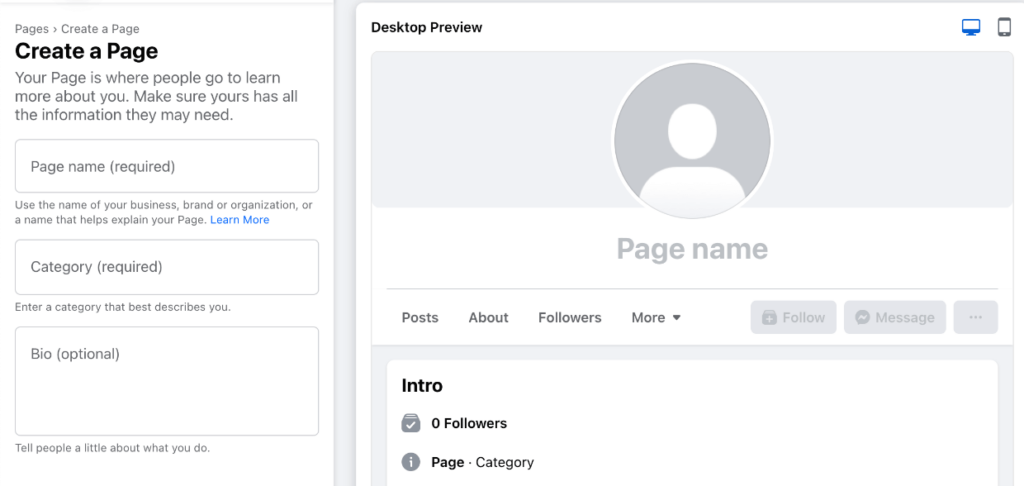
Make sure to include key information, like:
- Business hours and contact details
- Links to your photography portfolio
- A services section highlighting your photography packages
One of the most important elements of your page is the call-to-action button. On your business page, click the 3 dots on the right and select Add Action Button from the menu. In the popup, click Try Now. From there, you can choose a button that aligns with your primary business goal.
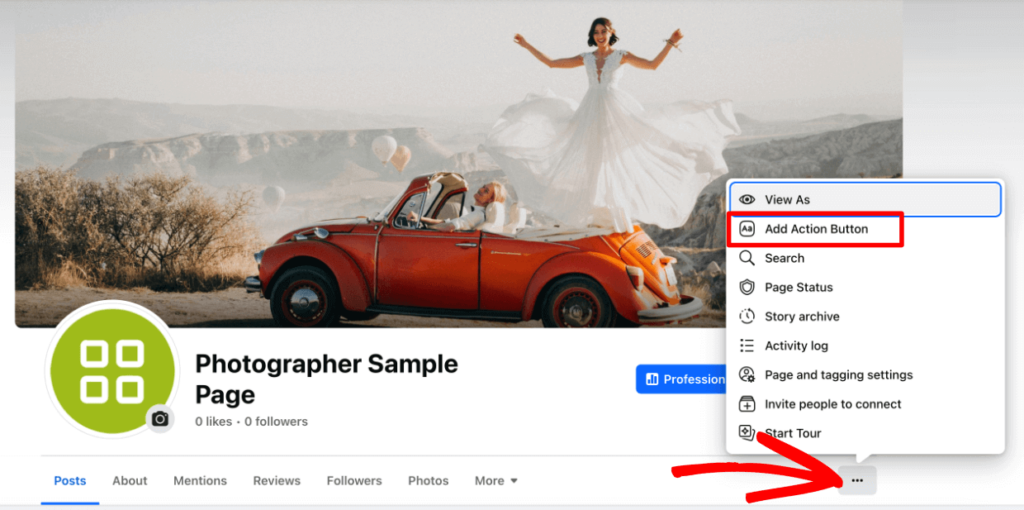
For example, “Book Now” works well for session bookings, “Contact Us” is great for wedding photography inquiries, and “View Shop” is a good option for selling prints. You can customize where this button leads, so direct accordingly (your booking page, contact form, eCommerce store, etc.).
Pro Tip: Before starting your ad campaigns, populate your page with some of your best work and testimonials from happy clients. This social proof will help convert potential clients who visit your page through your ads.
Step 2: Install Your Meta Pixel
Before diving into creating ads, let’s set up Meta Pixel tracking on your website. While this step isn’t mandatory, it’s highly recommended as it helps you measure conversions, track how visitors interact with your site after clicking your ads, and build more targeted audiences for future campaigns.
The Meta Pixel is essentially a small piece of code that you add to your website. Once installed, it provides valuable data about who’s visiting your site and what actions they take, like viewing your portfolio, checking pricing pages, or submitting contact forms. This information helps you understand which ads are performing best and optimize your campaigns for better results.
To create your Meta Pixel, go to your Facebook Events Manager. You can find this by clicking All Tools » Events Manager from your Meta Business Suite account or from the Ads Manager menu.
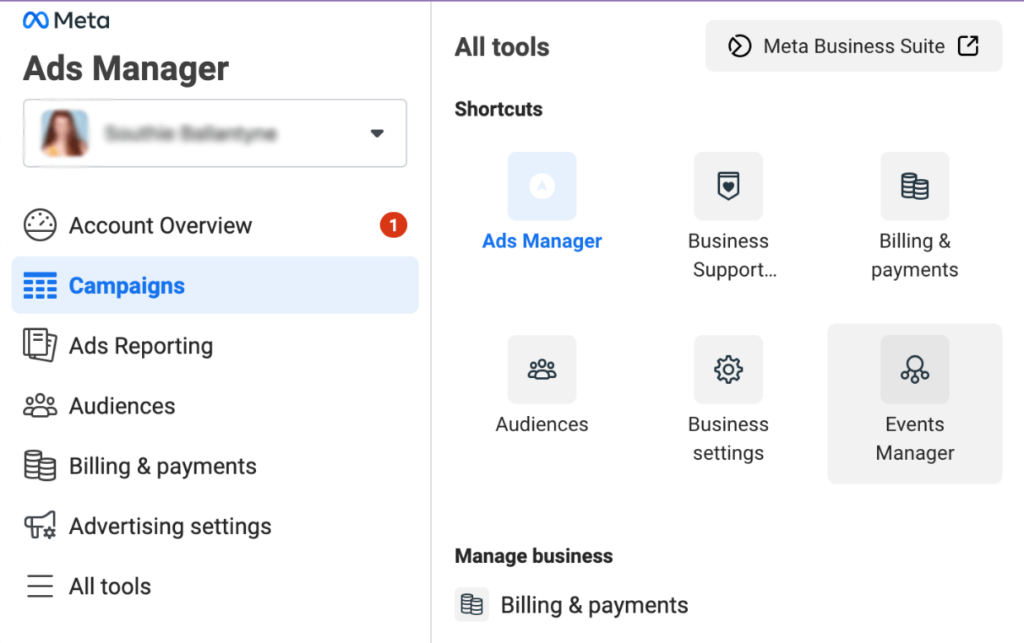
From here, click Connect Data Sources and select Web as your connection method. Give your pixel a name (something like “Photography Website Pixel”) and click Create.
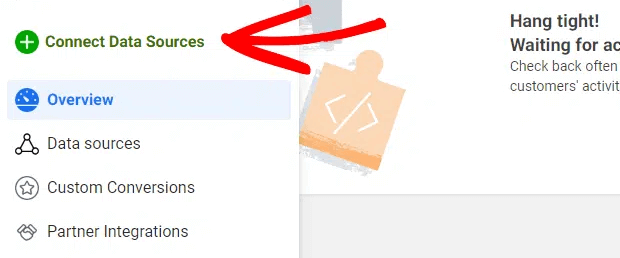
Now comes the technical part—adding the pixel code to your website. If you’re using WordPress, there’s no need to mess with code. Instead, we recommend using MonsterInsights, our favorite Google Analytics plugin, or WPCode, a simple plugin that lets you add the pixel code directly to your theme’s header. These plugins make the process much easier, allowing you to add your pixel with just a few clicks instead of editing your site’s code directly. You can check out this MonsterInsights tutorial to learn more.
Pro Tip: Once your pixel is installed, let it run for at least a few days before starting your ad campaigns. This gives Facebook time to gather data about your typical website visitors, which will help you create more effective targeting for your ads.
Step 3: Create Your First Ad Campaign
Creating your first photography ad campaign might seem daunting, but we’ll break it down into manageable steps. Before setting up your ad, take a moment to think about your ideal photography client. Are you targeting engaged couples for wedding photography? Parents-to-be for maternity sessions? Consider factors like:
- Location: Where do your clients typically come from? For most photographers, targeting within 25-50 miles of your service area works best.
- Age and Demographics: Match this to your typical client profile. For example, wedding photographers might target people aged 25-35.
- Interests: Think about what your ideal clients are interested in. For wedding photography, you might target people interested in wedding planning, bridal magazines, or wedding venues in your area.
- Life Events: Facebook lets you target people who recently got engaged, moved, or had other major life changes.
Now, let’s start with setting up a campaign that drives potential clients to your portfolio or booking page. From your Facebook photography business page, click the blue Advertise button to get started.
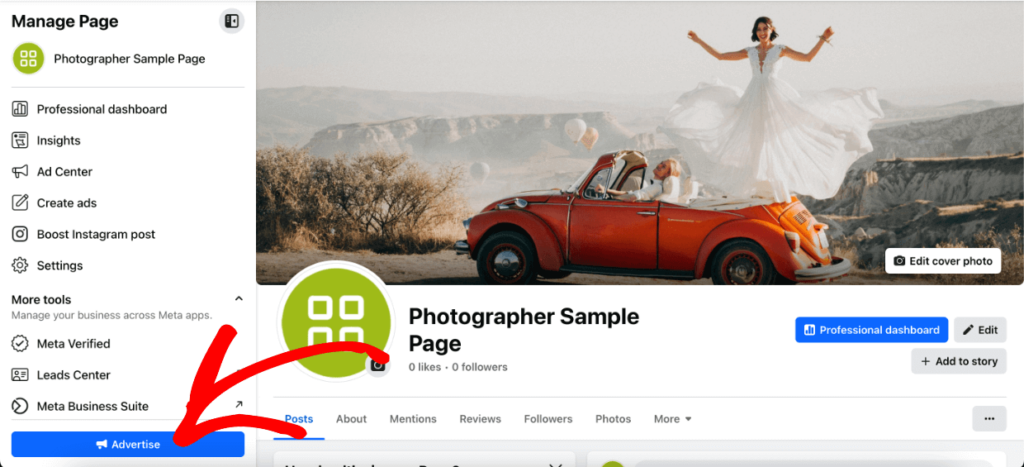
Facebook will ask you to fill out some details and choose a goal for your campaign. For photographers, the most useful objectives are typically “Traffic” if you want to drive people to your website, “Lead Generation” if you’re collecting contact information, or “Conversions” if you’re selling digital downloads, prints, or sessions directly.
Once you’ve defined your audience and goals, it’s time to create your ad.
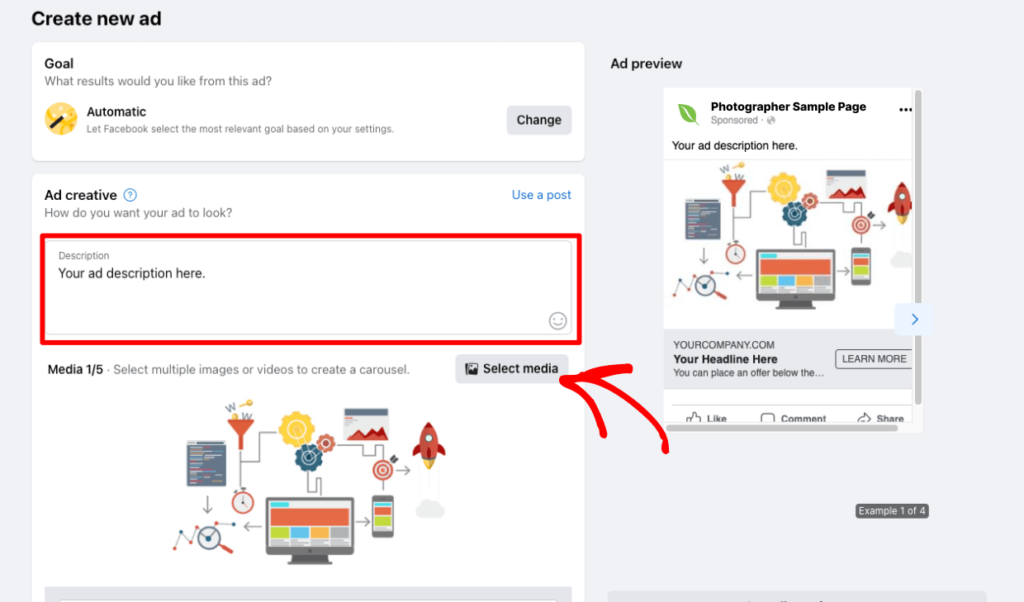
The creative elements of your ad—images, copy, and call-to-action—are crucial for success. Here are some proven strategies:
- Use your absolute best images that represent the type of work you want to book.
- Keep your ad copy concise but compelling, focusing on the benefits to potential clients.
- Include a clear call-to-action that tells people exactly what to do next.
- Test different ad formats—single image ads often work well, but carousel ads can showcase multiple images from a session.
- Consider adding a testimonial snippet in your copy to build trust and reassure potential clients.
For example, here’s an example of an effective Facebook Ad for wedding photographers:
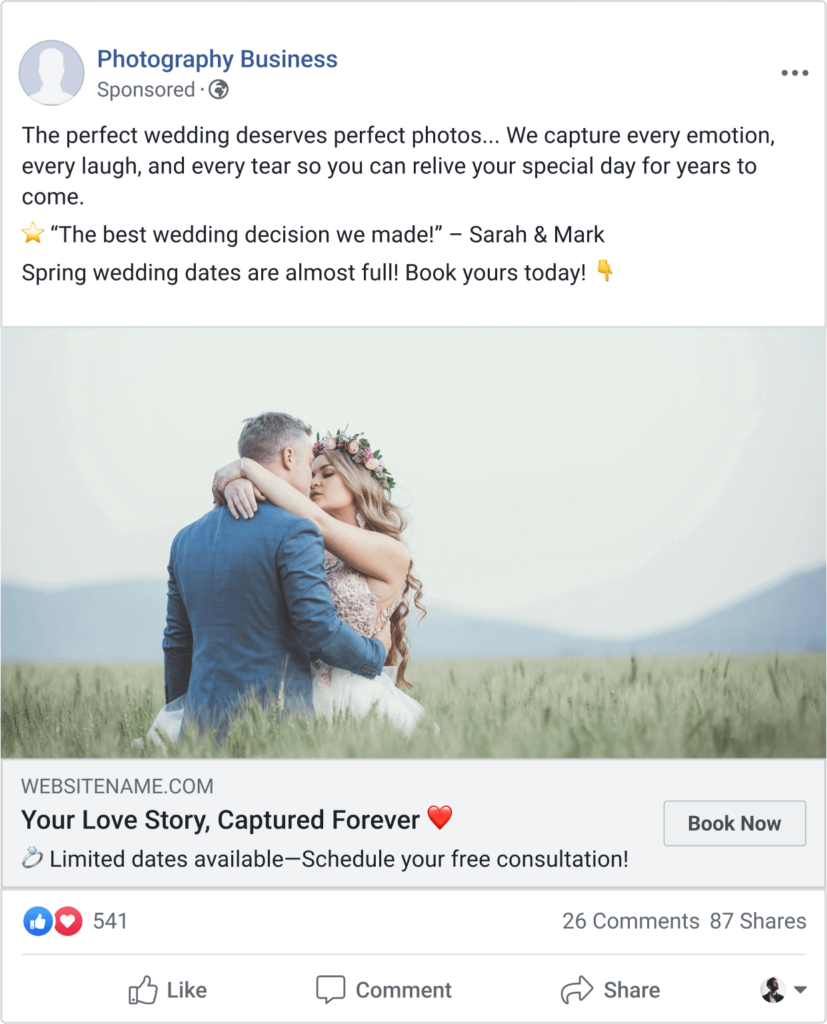
Pro Tip: A limited time offer or discount is a great way to drive conversions, such as “Book this month & get a free engagement session!” or “Get $200 off holiday portraits when you book before Thanksgiving!”
Make sure the landing page you send people to matches the promise in your ad. If you’re advertising wedding photography, don’t just send visitors to your homepage—guide them to a dedicated wedding portfolio page. This page should showcase your best wedding work and provide clear details about your packages and booking process.
Need an easy way to create a stunning portfolio? With Imagely, you can build a beautiful, high-performing photography website on WordPress—no coding required. Our powerful plugin makes it simple to create customizable galleries, proofing pages, and even sell your wedding photography online.
Step 4: Master Audience Targeting
The real power of Facebook Ads lies in the targeting capabilities. For photographers, proper targeting is often the difference between wasting money on random clicks and connecting with clients who are ready to book. Let’s look at some proven targeting strategies specifically for photographers.
First, consider creating a few core audiences based on the types of photography you offer. Here’s a practical example of layered targeting for a family photographer:
- Location: 25-mile radius around your studio
- Age: 28-45
- Parents with children ages 2-12
- Interests: Family activities, professional photography, family portraits
- Income level: Above average (to ensure they can afford your services)
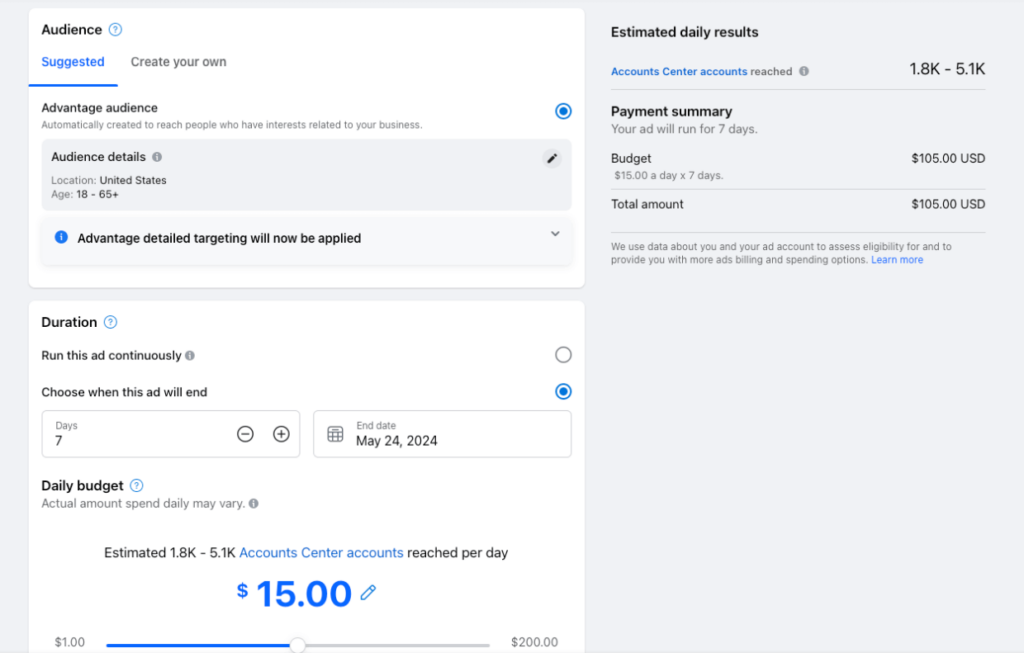
To optimize further, you may want to create separate audiences for specific niches. For instance, if you’re a wedding photographer, you could create different audiences for:
- Recently engaged couples in your area (Facebook’s life event targeting makes this easy)
- People actively planning weddings (shown by their interests and behaviors)
- Couples who visited your website in the last 30-60 days (using your Meta Pixel data)
One particularly effective strategy is to create lookalike audiences based on your past clients. Start by uploading a list of your previous clients’ email addresses to Facebook. The platform will then find users with similar characteristics, helping you reach new potential clients who share traits with people who’ve already booked you.
Advanced Targeting Tips:
- Use the Narrow Audience feature to combine different interests and behaviors.
- Exclude past clients from acquisition campaigns (but include them for print sale promotions).
- Create separate ad sets for different geographic areas if you serve multiple locations.
- Test different audience sizes—Facebook generally recommends audiences between 100,000 and 2 million people, but photographers can often succeed with smaller, more focused groups.
For budget and scheduling, start conservatively. A daily budget of $10-20 is enough to test how your ads perform. You can always increase your budget once you start seeing results. Set your ad to run for at least a week to gather meaningful data. Remember that effective targeting is an iterative process. Start with your best assumptions about your ideal clients, then refine based on the data you gather.
Step 5: Monitor and Optimize Performance
Once your ads are running, resist the urge to make constant adjustments. Facebook’s algorithm needs time to optimize your campaigns, typically 3-7 days minimum. Instead, focus on monitoring key metrics that actually matter for your photography business.
You can monitor campaign performance from your Facebook Ads Manager.

The most important metrics to track vary depending on your goals, but generally include:
- Click-through rate (CTR): For photographers, a CTR between 1-2% is considered good and above 2% is excellent.
- Cost per click (CPC): Track this against your average booking value
- Conversion rate: How many ad clicks turn into inquiries or bookings
- Ad frequency: How often does the same person see your ad (keep this under 3 to avoid ad fatigue)
Let’s talk about what these numbers actually mean for your business. For example, if you’re a wedding photographer charging $3,000 per wedding, spending $500 to acquire a booking represents a healthy return on investment. Understanding these relationships helps you make better decisions about your ad spend. When optimizing your campaigns based on performance data:
- Start with your images: If an ad isn’t performing well, test different photos first. Wedding photographers often find that candid emotional moments outperform staged formal shots. Portrait photographers might discover that behind-the-scenes content drives more engagement than final images.
- Refine your copy: Look for patterns in what resonates with your audience. Are they responding better to emotional appeals (“Capture memories that last a lifetime”) or practical benefits (“Complete wedding collection delivered in 3 weeks”)?
- Don’t give up too fast: A common mistake photographers make is turning off campaigns too quickly. Remember that your cost per result often improves over time as Facebook’s algorithm learns who’s most likely to respond to your ads. Give each test at least $100 in spend before making major changes.
Pro Tip: Create a simple spreadsheet to track your key metrics over time. Include notes about seasonal changes, promotions, or other factors that might affect performance. This helps you spot trends and make better decisions about when and how to adjust your campaigns.
Power Up Your Results with Imagely
Running effective Facebook ads is just one piece of the puzzle. To maximize your return on ad spend, you need a professional photography website that converts visitors into clients. This is where Imagely comes in, helping photographers turn clicks into bookings and sales with a WordPress website designed for speed, beauty, and functionality.
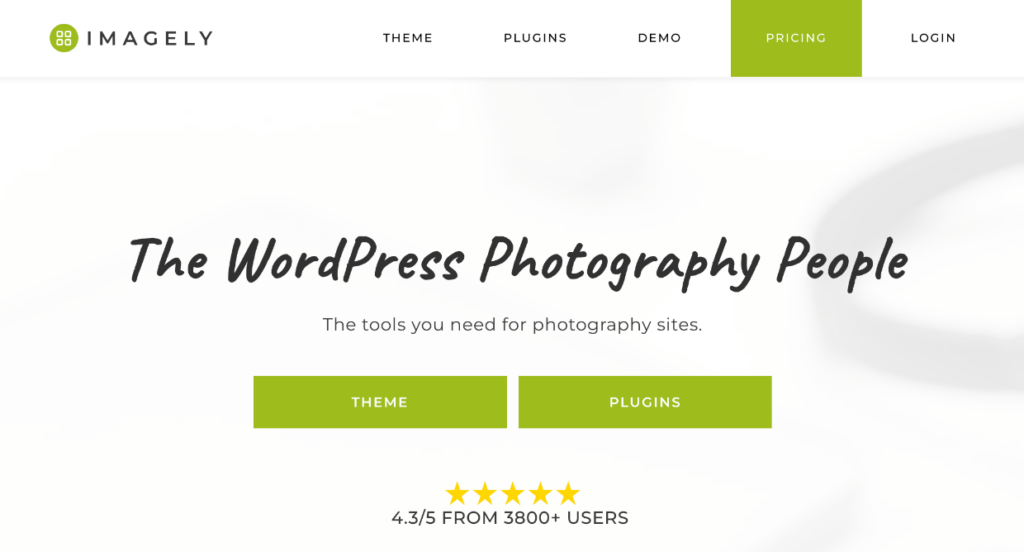
When someone clicks your Facebook ad, they expect a seamless experience that matches what your ad promised. Imagely’s photography-focused tools ensure you site delivers exactly that:
Professional Portfolio Presentation
Instead of sending potential clients to a generic gallery, Imagely lets you create stunning, high-performance galleries that load quickly and look beautiful on any device.
- 96+ theme designs to match your brand
- Customizable lightbox & multiple gallery layouts (mosaic, masonry, grid, and many more)
- Captions, albums, animations, slideshows, and tons of other customizations
- SEO-friendly images & fast loading speeds
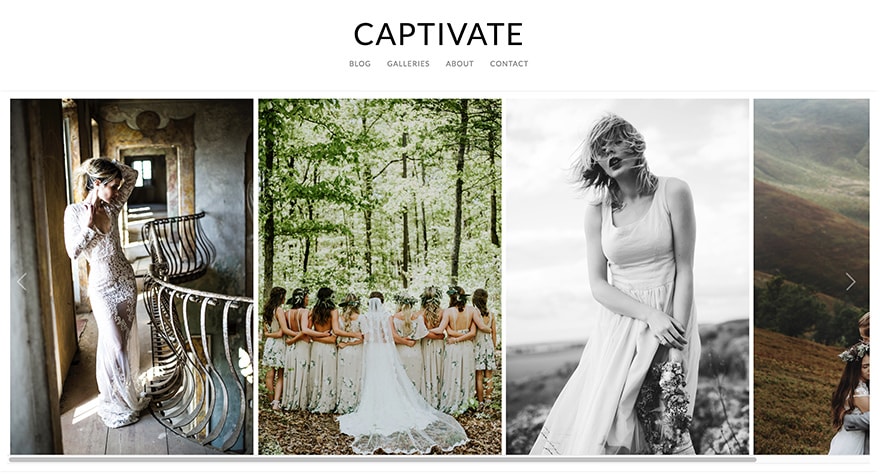
With these tools, you can showcase your work in a way that captivates potential clients and keeps them engaged.
Built-In eCommerce with Automated Print Fulfillment
Want to turn ad traffic into passive income? Unlike basic gallery plugins, Imagely includes built-in eCommerce with automated print fulfillment.
- Sell prints & digital downloads directly from your website
- Orders are automatically processed & shipped—no manual work required
- Run Facebook ads to specific collections, making it easy for clients to purchase
This means when clients click to buy, everything happens automatically—from payment processing to print delivery.
Client-Friendly Features That Boost Bookings
Running a successful photography business is easier than ever with tools built specifically for photographers:
- Client proofing galleries for an easy selection process
- Lightroom integration for a seamless workflow
- Built-in watermarking and image protection to keep your images visible and safe
- Social sharing and image commenting to increase engagement and grow your brand
Ready to turn your Facebook ad clicks into real sales?
Get started with Imagely today!
Imagely isn’t just another gallery plugin—it’s an all-in-one platform built to help photographers scale their business.
Frequently Asked Questions (FAQs)
How much does it cost to advertise on Facebook?
Photography business ads on Facebook typically cost between $5-20 per day to start, with most photographers spending $200-500 per month during peak booking seasons. Cost per lead varies by market and specialty but generally ranges from $2-15 per click.
Wedding photographers often see positive ROI with budgets of $300-600 per month during engagement season, while portrait photographers might succeed with smaller budgets of $150-300 monthly. The key is starting small and scaling up based on results.
What kind of images work best for Facebook ads?
The most effective images for photography Facebook ads are authentic, emotional moments that showcase your style while relating to your target audience. For wedding photographers, candid moments and first looks typically outperform formal poses. For family photographers, genuine interactions perform better than staged studio shots. Images should be high-quality but not over-edited, and should include people’s faces when possible, as these tend to perform better in Facebook’s algorithm.
Is Instagram or Facebook better for photographers?
Both platforms are valuable, but Facebook typically offers better targeting and lead generation, while Instagram is better for visual engagement. The best option depends on your goals:
- Instagram Ads: Best for brand awareness and engagement. Since Instagram is a visual-first platform, it’s great for showcasing portfolios, attracting followers, and promoting lifestyle, wedding, or portrait photography.
- Facebook Ads: Ideal for lead generation and detailed targeting. Facebook allows you to target users based on life events (like engagements), interests, and behaviors, making it perfect for attracting high-intent clients and driving website traffic.
Can you advertise on both at the same time?
Yes! Meta Ads Manager lets you run ads on both Facebook and Instagram simultaneously. Meta’s AI can automatically optimize placement to show ads where they perform best, ensuring you get the best return on ad spend.
Creating effective Facebook ads for your photography business doesn’t have to be complicated. By following the steps in this guide and continually refining your approach based on results, you can build a reliable system for attracting and converting your ideal photography clients.
Remember that successful Facebook advertising is about more than just running ads—it’s about creating a seamless experience from the first click through to the final delivery of images. Make sure your website and portfolio are optimized to convert the traffic you’re paying for.
Don’t have Imagely? Get started today!
If you enjoyed this article, be sure to check out The Best Places to Sell Photography Online (Ultimate Guide).
For more photography tips and WordPress tutorials, check out our blog.

